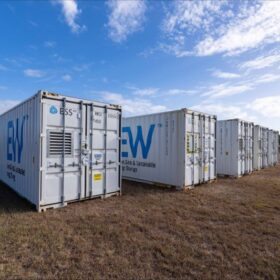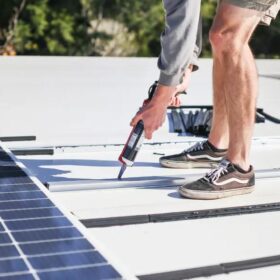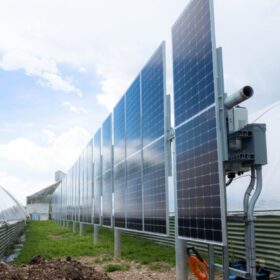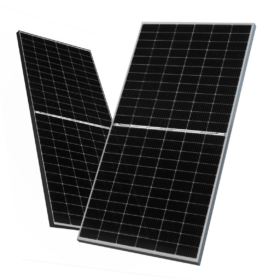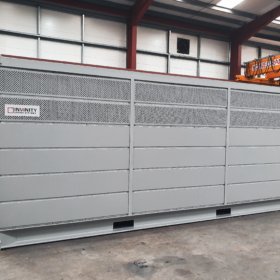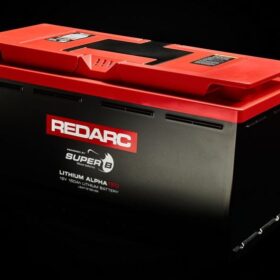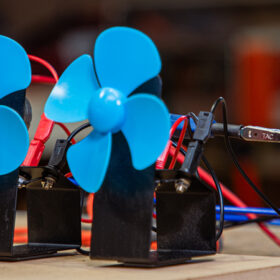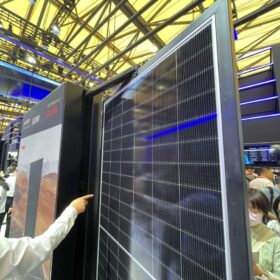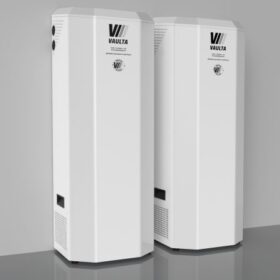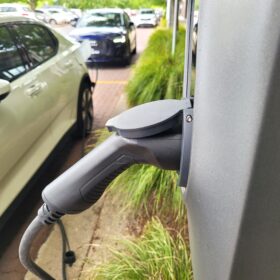State taps local companies to test out flow battery technology
Flow battery technology is under the microscope with the Queensland government committing $24 million (USD 15.83 million) to further evaluate and assess the capacity of the technology to support the next stage of the state’s battery capability and help meet its renewable energy targets.
Lightweight solar panel provides solution for rooftop install
Queensland installer UV Solar has for the first time rolled out a new frameless solar panel that manufacturer GoodWe says is 60% lighter than conventional modules, making it ideal for rooftops that are unable to support traditional PV and racking.
Vertical bifacial solar seeking greenhouse albedo and deployment space
A farmer in the United States has installed vertical bifacial solar, leveraging greenhouse albedo to increase output. The installation demonstrates promising generation during winter months, while maximising limited land space.
TOPCon PV modules outperform PERC by more than 5% in energy yield tests
A study by TÜV Nord in Malaysia shows that the latest generation of tunnel oxide passivated contact (TOPCon) modules surpass their older rivals on energy yield. The researchers compared n-type TOPCon modules with older p-type PERC modules, both manufactured by JinkoSolar over a three-month period earlier this year. The newer product showed an energy yield 5.69% higher than its PERC counterpart.
Horizon sets sights on vanadium flow batteries to solve energy storage challenges
Horizon Power, Western Australia’s regional power provider, will deploy a 78 kW/220 kWh vanadium flow battery in the state’s north as it seeks to increase its understanding of how the Australian-born technology can be best utilised to support long periods of 100% renewable energy supply in regional and remote areas.
Redarc unveils 150 Ah lithium battery
The Alpha 150 battery, produced in the Netherlands by Adelaide-headquarted electronics manufacturer Redarc, has a lifespan of more than 5,000 cycles and a continuous discharge rating of 200 A.
Melbourne researchers target MW scale with proton battery technology
A team of engineers at Melbourne’s RMIT University have developed a rechargeable ‘proton battery’, claiming the technology has the potential, with further development, to store more energy than currently available lithium-ion batteries.
Top solar panel brands in performance, reliability, and quality
Solar modules are evaluated in the Renewable Energy Test Center annual PV Module Index.
To achieve net zero energy status, solar-powered buildings should not exceed 10 floors
Researchers in Canada have found that nearly zero-energy buildings (NZEBs) with on-site solar energy generation should not exceed an energy use intensity (EUI) of 50 kWh/m2a, which they said corresponds to a maximum of 10 floors. They also ascertained that the maximum permitted EUI by net-zero energy status is 17–28 kWh/m2a.
Queensland manufacturer launches 5.12 kWh battery for residential market
Australian battery technology company Vaulta has unveiled its first dedicated residential battery with the small-scale energy storage system purportedly able to operate for 4,000 cycles with an 80% depth of discharge.
